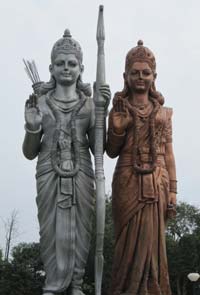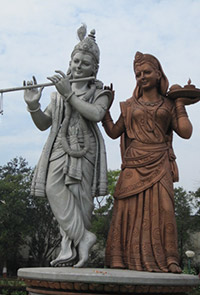
The benefits of Yoga are vast
Asanas, (postures), pranayama (breathing practices), meditation and chanting help to:
-
cleanse, strengthen, and stabilize the physical body including the nervous and glandular systems
-
Balance the internal energies
-
promote flexibility and fluidity
-
quiet the mind
-
open the heart
The Yogic teachings provide guidance on ways to help us to be free of suffering, to be more loving, to be happy and healthy, and to live with a kind open heart.
The ancient Yogic philosophy states that by stilling the mind we will be able to clearly see who we really are beyond this body and personality. It reminds us that we are a part of everything that exists. We can call it God, Consciousness, Energy, Spirit; it doesn’t matter. What does matter is that we feel connected to and not separated from all that there is. What matters is that we not feel alone. Therefore, the traditional teachings of Yoga provide guidance on ways to help us to be free of suffering, to be more at peace, to be more loving, to feel happy, and to live with a kind, open heart.
“The regular practice of Yoga can help you face the turmoil of life with steadiness and stability.”
B.K.S. Iyengar
Private Yoga Session
Schedule a private yoga session to see what type of practice is best suited for you.

“Here in this body
are the sacred rivers:
here are the sun and moon
as well as all the pilgrimage places.
I have not encountered another temple
as blissful as my own body”
-Saraha

“Go inside and listen to your inner voice. Every question has an answer. Your soul is full of wisdom and knows the way”
– Yogi Bhajan


Yoga for Vata Imbalances
Ground, Stabilize, Soothe, Calm

Emphasize gentle to moderate pace; alternate rhythmic movements, (vinyasa), with moderate holding of postures
- Emphasize – slow, steady, meditative approach
- Practice in a warm environment,
- Longer warm-ups- sun salutations practiced in a slow, gentle way
- Avoid jumping between poses
- Standing poses to ground and give strength to the base
- Balancing poses to increase concentration and stability
- Squats to encourage downward movement of energy
- Core strengthening poses
- Build heat
- Use props
- Restorative postures
- Lying down knees to chest
- Long rest – shavasana
- Focus on slow, steady breathing in the poses
- Pranayama – breathing – calming, balancing, ujjayi, (ocean sound), nadi shodana (alternate nostril)

Yoga for Pitta Imbalances
Relax, Reduce Agitation, Calm and Cool

Emphasize- moderate pace, work at 75% capacity, easy flowing manner, work without strain
- Moon Salutation with a soft gaze, and awareness on balancing relaxation with effort
- Standing and sitting poses that focus on legs open out wide to release the inner heat
- Poses to open hips
- Cooling poses including forward bends and lateral bends which reduce excess fire in the mind and belly
- Cooling inversions such as Viparita Karani – legs up the wall pose
- Soft cooling gaze or eyes closed when appropriate
- Focus on exhalation and release as you practice
- Pranayama –cooling -sitali, sheetali, nadi shodana

Yoga for Kapha Imbalances
Stimulate, Motivate, Energize

Emphasize heat, lightness, upward movements
- Sun Salutations practiced with the intention of “get going”
- Standing poses with the arms raised up to open and clear chest
- Backbends open the lungs to help clear congestion and are stimulating
- Inversions that require some effort and effect the thyroid gland and the throat such as sarvangasana (shoulder stand) and halasana (plow), simhasana (lion pose)
- Supta virasana (reclining hero pose) to open the abdomen and the chest
- Focus on inhalation during the poses
- Pranayama- heating – bhastrika (bellows breathing), Kapalabati (skull polishing) and surya bhedana (right nostril)
“The true purpose of yoga is to discover that aspect of your being that can never be lost.”
Deepak Chopra
